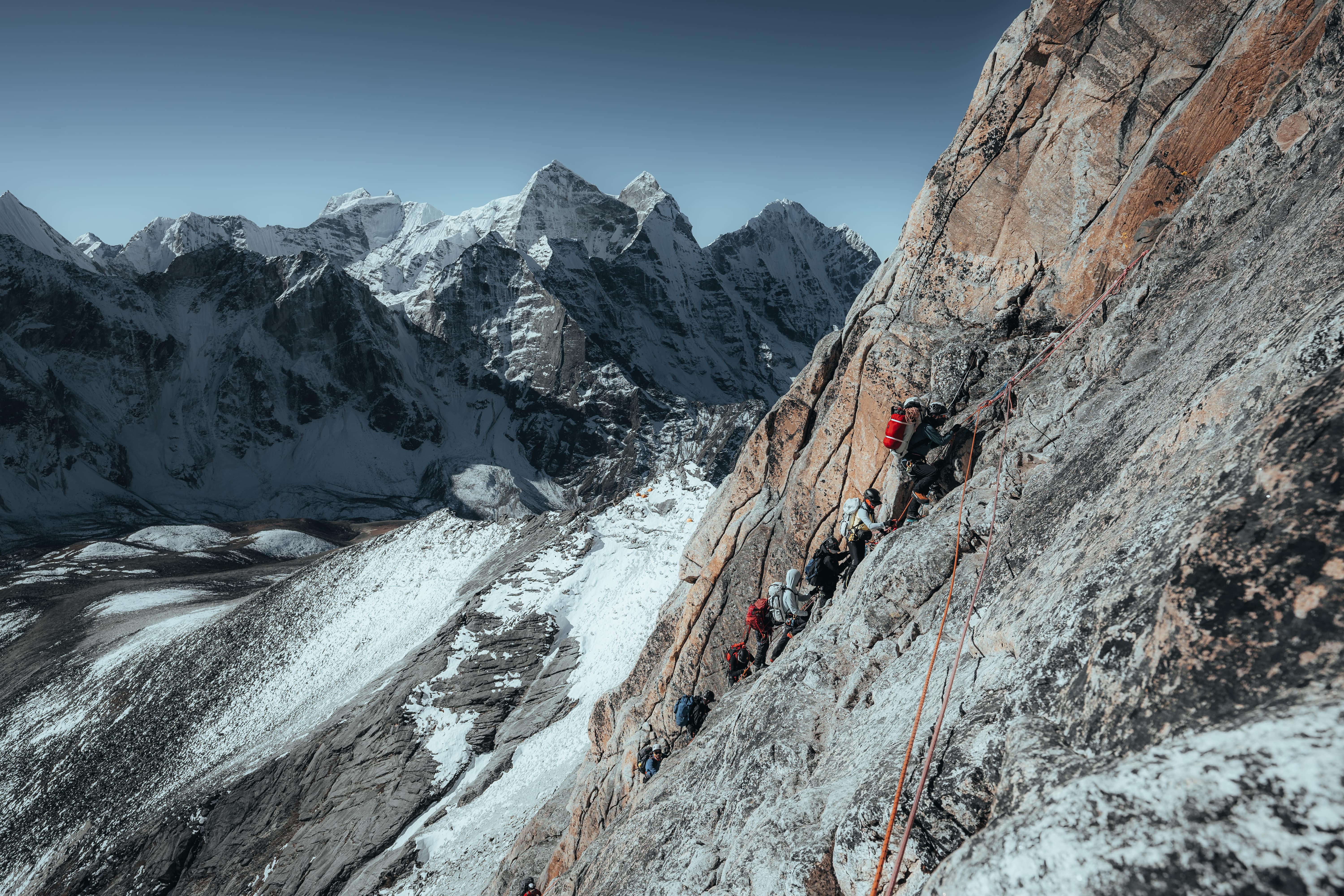
HOW TO PREPARE FOR HIGH-ALTITUDE SUCCESS
Climbing a mountain is never easy, and it shouldn’t be. Here’s how to prepare, what to expect, and how to give yourself the best chance for success at standing on the summit.
Whatever you are aiming to climb, be it Kilimanjaro or Mount Everest, one thing’s for sure: you don’t just turn up and hope for the best. High altitude climbing will be one of the hardest things you do: physically, mentally, and emotionally. The people who succeed aren't always the fittest or fastest, but those who prepare properly, learn their body, and accept some level of suffering.
Below I have written out how to prepare for high altitude success and what are some of the things you will experience.
1. Train for the Mountain
You don’t need to be a professional athlete or at peak level of fitness to summit a high altitude peak, but you do need to show up with a solid base level of fitness. We call this being mountain fit.
For a summit like Lenana (4,985m) on Mount Kenya, a solid base level of fitness is enough. That means being comfortable walking for 4–7 hours a day with a pack. You might find that hard, a lot of people do, but it should be manageable. Don’t underestimate the effect of consistent hill days in your training: getting miles under your legs is essential in your preparation. When I trained for Special Forces selection I didn’t train at high intensity at all. I would literally go into the Brecon Beacons carrying a day sack filled with water, food and essential clothing, and would walk all day. Yes, I had a solid base of fitness, I knew how my body felt under heavy loads and extreme stress, but I didn’t need to turn up to selection burnt out and overtrained. That’s the same with mountains, you want to turn up with endurance and legs that can carry you for extended periods of time, not having PR’d your 1 rep max on deadlift, squat and bench and nailed your 5k time to sub 20 mins. Yes, if you do not have a solid base of fitness you will need to use methods like high-intensity training to get up to that standard, but it isn’t necessary, just some solid mountain legs are all that’s required.
At Concept Expeditions we work closely with our Performance Director, Josh Taylor, who has worked with elite-level athletes and business people to help them achieve a high level of performance. If needed, Josh can work with you to help you prepare physically and mentally, so you are in the best shape possible to take on any expedition or anything that life throws at you.
2. Altitude Slows Everything Down
One of the biggest misconceptions is that we’ll be moving quickly on the mountain. In reality, altitude changes everything. The higher you go, the slower you need to move. It’s not a race, it’s energy preservation.
If you race into camp after a big day and collapse from exhaustion, your body will focus on recovery instead of acclimatisation. That’s when the headaches come. That’s when you stop sleeping well. And that’s when you can struggle with acclimatisation before even attempting the summit.
We climb slow on purpose. We want everyone to summit, it isn’t a race. The aim is to reach the summit and we will do everything we can to maximise your own chance of success. Save your energy for summit day, that’s when you will need it.
3. Eat When You Don’t Want To, Drink When You Think You’re Full
High altitude kills appetite. Food won’t taste the same, and your body might reject the idea of another mouthful of rice or soup. But you have to eat. It’s non-negotiable.
Even on Everest, I’ve looked at a plate of food at Camp 2 and had zero desire to touch it, but I still force it down. Sometimes I use water to wash the food down. Why? Because food is fuel. No fuel, no energy. No energy, no summit.
Hydration is just as important. At altitude, your body uses up more fluid, and drinking more water improves blood volume, oxygen delivery, and overall function. You’ll feel better, recover faster, and adapt more easily.
4. Expect Headaches
Altitude headaches are normal. Almost everyone gets them. They will come and go. Don’t panic.
Tell your expedition leader if you're struggling, especially if the headache is persistent or worsening. But don’t catastrophise, it doesn’t mean you’ve failed or need to descend immediately. It’s just part of the process.
5. Choose Your Team Carefully
Preparation doesn’t stop with fitness. Choosing the right expedition leader and company is one of the most important decisions you’ll make.
You need to know that your guide is experienced, calm under pressure, and capable of making big calls when it counts. You need someone who can read the weather, read the mountain, and more importantly read you.
At Concept Expeditions, I personally lead or oversee all major climbs. We operate with small groups, elite guides, and a safety-first approach that never compromises the experience. When you join us, you're not just getting a trip, you’re getting a team that lives and breathes this life.
Final success in the mountains comes down to a few key factors, but above all, preparation is everything. In the military, preparation wasn’t just a task, it was a way of life. We spent hours, days, even weeks training, drilling, and rehearsing. Most of our time was dedicated to getting ready for a single moment on operations, sometimes lasting only minutes, even seconds, when everything counted. That’s why we train.
Success is something we all strive for, but if we don’t stack the odds in our favour, we won’t find it. Embrace discomfort. Work hard. Be smart with your decisions. If you’re ready for that, we’ll help get you there.
—
Jay Morton
Founder, Concept Expeditions